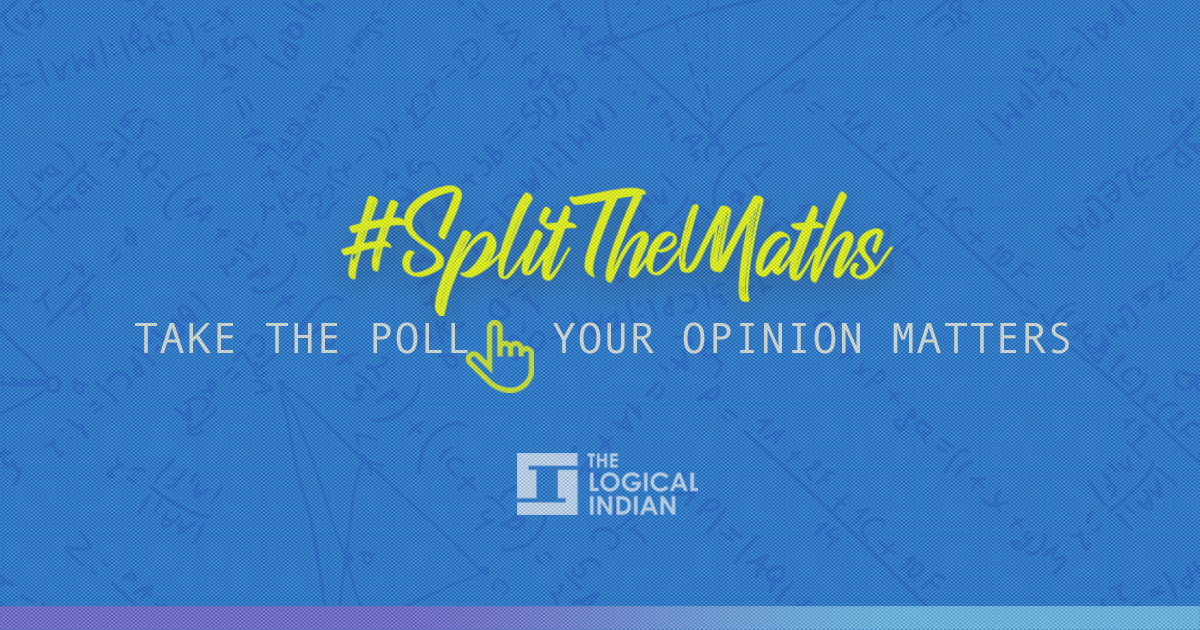How many of you use quadratic equation while filing a tax? How many of you use trigonometry for baking cookies? How many of you use calculus to write a mystery novel? At times in professional lives, we wonder what to do of all the mathematical information we worked so hard to acquire at school. The question boils down to how relevant or irrelevant knows Maths been so far in the professional lives of many people who might not necessarily have a technical line of trade.
Math anxiety is quite a popular form of state that affects students in different ways. One reason behind this anxiety is constant stress taken to acquire an aptitude for every type and level of Mathematics. While the world increased the options for the program of Mathematics study, India has pushed for restriction in Mathematics curriculum, a regressive step in the wrong direction. To counter this issue of “one size fits all” Mathematics in the common interest all students has been long pending.
In a country like India, back in the seventies, Mathematics used to be offered at two different levels. One was ‘Composite Mathematics’, and the other was ‘General Mathematics’. Composite Mathematics was for students with an aptitude and inclination towards algebra besides different abstract and theoretical orientation until it changed to the current system in the mid-’80s. While the world over, the Mathematics curriculum changed for the better and was offered at three distinct levels at secondary schooling stage. India has opted for restriction in Mathematics curriculum – a regressive and wrong step. The West increased Mathematics rigour to compete with Asian countries like Korea, China, and India, etc. There is a lot that India’s Education Policy needs to improve the precision and relevance of education and skills delivery.
The dire need to change our Mathematics Curriculum: Introducing three levels of Mathematics Program
There is a hugely practical and prudent need to introduce three levels of Mathematics at Class IX and onwards.
The first level of Math M1 is ‘Advanced or Composite Math’ and ‘Applied General Math’. It offers high-intensity Mathematics educational experience and rigorous standards into +2 level Mathematics program. This bracket of Mathematics prepares one to plan for intensive qualification planning such as Engineering Technology, Quantitative Analysts and Technical/Higher Education professional courses, etc.
The second level of Math M2 is Class 8th level ‘Applied General Math’ with +2 level Applied Mathematics and Sector orientation. This bracket will not include any Mathematical topics such as calculus, trigonometry, algebra, etc. This category of Math is designed especially for people interested in taking up medicine or courses in Humanities, Art, Agriculture, Architecture, Hospitality, etc. The Applied Mathematics included in this category is also advantageous for people looking into getting a job or taking up further studies into the Retail Services sector, Health care management, Banking, Finance and Accountancy, Agriculture, Dairy Management, Travel and Tourism Management, Animation, etc. at +2 senior secondary schooling stage.
To make it further simple, the third bracket of Mathematics M3 is ‘Basic General Math’. Its a relatively elementary section of the course that will include Class 5 level Math and a few concepts of Applied Math for a living. It’s useful for people looking to leave school at class 10th stage to pursue intensive training and skill development programs such as Certificate courses, beautician, Actors, artisans, Drivers, Sportsmen, Dancers, Singers, Electrician, Mechanic, Chef, Actors, etc. The M3 Math gives that much needed time away from it, providing students scope for many hours of practice to be perfect in their respective specialization.
The rationale for three levels of Mathematics Curriculum
The categorization of Math in three levels is a pathbreaking step taken towards making the learning of the subject more relevant according to future college or career planning. A balanced curriculum for all the three levels of Mathematics has to teach through for enabling students to have well-rounded development at three different levels of math. It will not only de-stress learners and reduce the fear of Mathematics but will also improve a student’s learning outcomes. Segregating topics is a boon for learners who will be able to concentrate on the subject of their choice rather than invest time on the subject that is of less or no interest. Further, it facilitates students streaming into college, career, and skill development programs.
Currently, teachers and management produce results that do not match student competency levels, which is an unethical practice. Curriculum aligned to sector-specific Mathematics will improve candidate pools into a vast array of sector-oriented qualification pathways and wean students from traditional Engineering, Medicine, Law, Accountancy pathways.
The concept of ‘one size fits all’ is no longer relevant. The need of the hour is to provide students with the option to select from three levels of Math testing according to their abilities, interests, and need.
Dear members, do join our efforts by sharing your opinion as we will collect all the responses and take it up with the relevant government authorities and policy-makers. Your participation could help bring a landmark shift in the history of the Indian education system.
Create your own user feedback survey
About the Author: Mrs. K. Renuka Raju is Founder, Lotus Learning Systems Society (Regd) and Chairperson & Managing Director, Kovida Ltd, Hyderabad. She has over 25 years of experience in the education sector. She actively advocates the policies for the transformation of the education sector. She is first in India to lead 12 sector-oriented CBSE skill education courses at + 2 level (classes XI and XII) starting this academic year.











